Best Entry Level Camera For Video
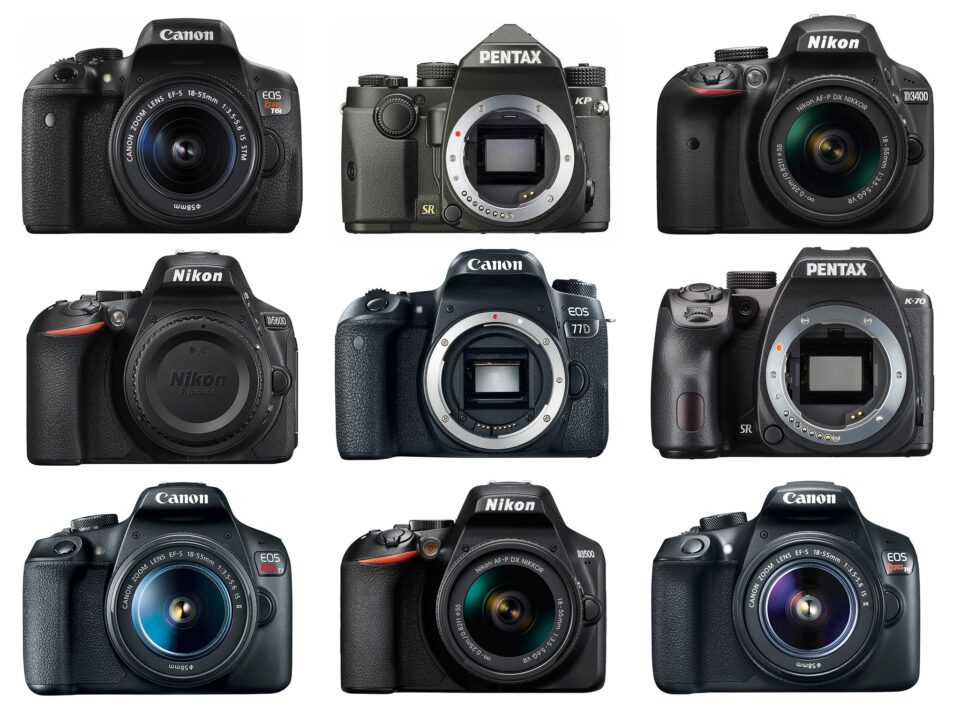
Not long ago, I had a chance to test several entry-level DSLRs side by side and review which ones were the best. Today, I'd like to circle back and rank some of these cameras for photographers who are trying to decide on a DSLR, either for yourself or as a gift. Hopefully, this list gives you a good idea of which camera will be right for you.
Early 2021 Update: Since this article was first published, almost every camera on the list below has changed in price, some more than others. The rankings below have been updated accordingly.
What Counts as an Entry-Level DSLR?
My first DSLR was the Nikon D5100, which is almost the definition of entry-level. But when I heard people actually call it entry-level, I was taken aback. It was a good camera! I had saved money and spent a lot of hours researching which one to buy, but pros nonetheless dismissed it as "consumer" or "amateur." The few times I heard people call the D5100 a "prosumer" camera, I nodded in agreement. And prosumer is a ridiculous word.
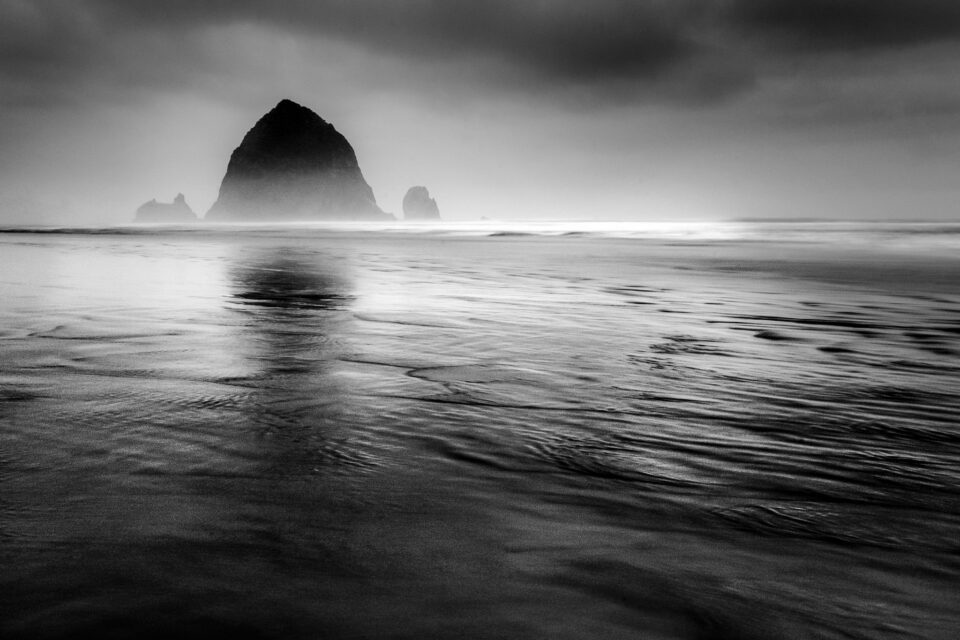
That's my way of saying that the cameras on this list are still really good, even though the title of the article says "entry-level." The category of the camera doesn't determine the category of the photographer. Besides, I stretched the definition a bit just because I wanted to do a great top-10 list and needed to reach the quota. Other than a few older or obsolete DSLRs that are still sold new for some reason, this guide includes every current entry-level DSLR on the market; it's the most comprehensive list you'll find anywhere today.
In total, I've ranked six DSLRs from Canon, two from Nikon, and two from Pentax. The overwhelming number of Canon cameras is simply because Canon's lineup has more entry-level DSLRs at the moment. It's not a sign of Canon favoritism (and you might notice that the bottom spot belongs to Canon, whoops). In fact, one camera from each manufacturer makes it to the top three. I didn't plan that ahead of time, but it's a pretty nice sign that each company is competitive in this space.
Last, I have to mention my (somewhat boring) takeaway after testing several entry-level cameras last year: They're all very similar in quality, without any real duds among them. The difference between the best and worst cameras on the list below is surprisingly small. Your individual needs – say, a desire to shoot video more than stills – could shift where each camera falls for you, perhaps significantly.
Don't Buy the Bundle
Before jumping into the rankings below, take just a moment to heed a quick warning: Don't buy that all-purpose photography bundle!
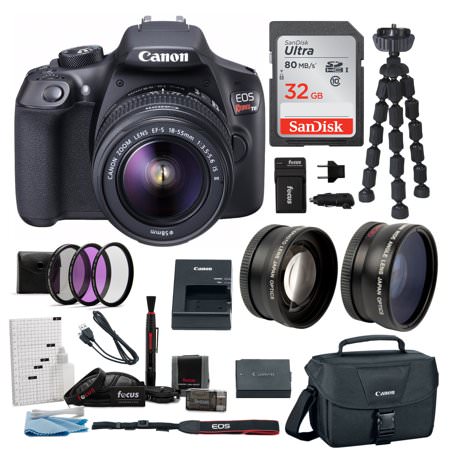
Most of the cameras in this article, due to their price range, are targeted largely at first-time DSLR buyers. As a result, you can buy most of them as a bundle with lots of extra photography accessories. This sounds good since it saves you some effort buying accessories separately – but the equipment included in these bundles is often quite overpriced.
Here's just one example. Right now, on Amazon, you can buy the Nikon D3500 with a kit lens for $560. Or, for $660, you can add two 32 GB memory cards, a remote shutter release, a bag, a flash, a filter kit, and two converters to turn the lens into a wider angle and a tighter telephoto. That sounds like quite a deal, right? But it's actually very overpriced.
In practice, the only useful accessories in that bundle are the memory cards and the remote shutter release (and maybe the bag). The filters are going to be low in quality, and as we've shown before, a bad filter clearly harms the sharpness and flare performance of your camera system. The wide-angle and telephoto converters are just novelties; your image quality generally will be terrible when using either of them. And the flash isn't automatic, just a cheap manual one.
Instead, you can buy two better 32 GB memory cards for $9 apiece, a generic AmazonBasics remote for $11 (the other one is generic anyway), and a simple bag.
This isn't to say all photography bundles are low quality, but that it's easy to get a bad one if you're just starting out and don't know any better. When in doubt, don't buy the bundle, and get all the accessories you need separately instead.
Now that you know the basics, here's the list of the top 10 entry-level DSLRs available today, ranked from worst to best:
10. Canon Rebel T6 / EOS 1300D
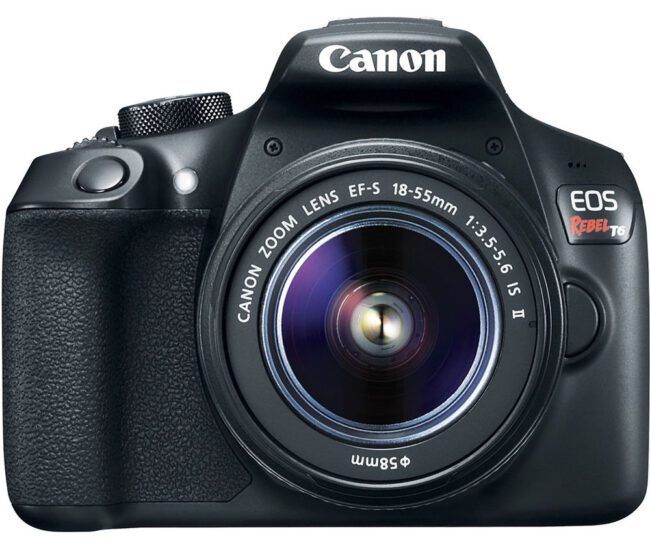
One of the few DSLRs on this list that I wouldn't recommend is the Canon Rebel T6 (also known as the Canon EOS 1300D). That's simply because it sells for $400 with a kit lens – a good price, but equal to the newer T7! Although the two are practically identical cameras, the T7 has a 24-megapixel sensor rather than 18 on this T6. So, I don't really see why anyone would buy the T6 kit at its current price, aside from being confused by Canon's sprawling DSLR lineup.
However, you can sometimes find a good deal on the T6 camera that includes a 70-300mm zoom alongside the regular kit, making it potentially a very good buy indeed. Last year, around the holidays on Canon's own website, the T6 was sold with two lenses – the 18-55mm kit lens and a 75-300mm telephoto – refurbished for $280. At such a price, the T6 would jump up higher than #10 and potentially be one of the best options on this list. So, it's really all about price.
(There is also a relatively similar camera known as the 4000D – or 3000D in some markets – which is not generally sold in the US, but retails for potentially even less at $340 or so at the time of publishing this article.)
9. Pentax KP
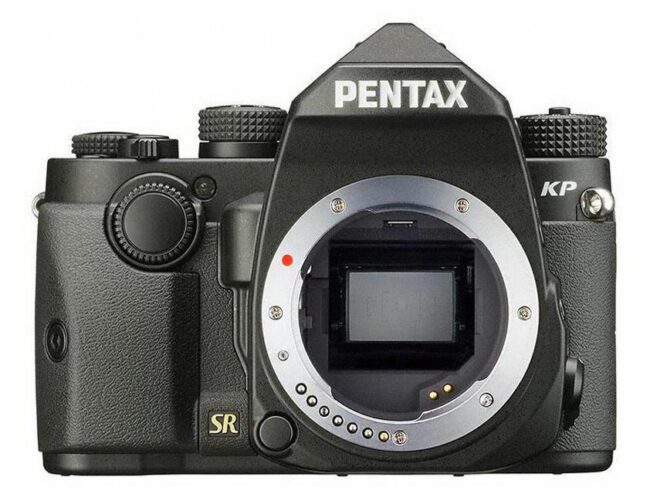
The 24-megapixel Pentax KP is one of the most advanced DSLRs on this list, positioned just at the edge of entry-level. It also has the highest-end control layout of all ten cameras here. You actually get three separate dials to change camera settings, which is more than can be said of most $3000+ professional cameras.
So, why is this camera only at position number nine? It all has to do with value. The Pentax KP is $950 with an 18-55mm kit lens, making it double the cost of some other cameras on this list. Arguably, too, the less expensive priced Canon 77D has better core specifications, without compromising much on advanced controls. The $700 Canon T7i and Nikon D5600 both beat it in core specifications, although they don't have the same high-end layout. In fact, Pentax's own K-70 is quite comparable to the KP, despite costing just $700 instead.
If build quality and control layout are at the top of your priorities, and you have a bigger budget, don't dismiss the Pentax KP entirely. It's still a strong camera – perhaps in the top three on this list if you ignore the price. But when you take value into account, you can get more camera for your money with other options below.
8. Canon Rebel T7 / EOS 2000D
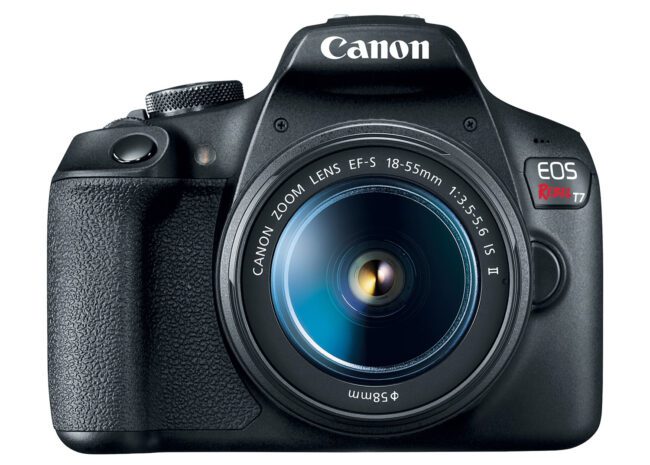
The Canon T7 is one of the newer options on this list (from February 2018), but its specifications already feel outdated. The camera has 24 megapixels, 3 frames per second shooting, and a 9-point autofocus system. It doesn't have a touchscreen or a tilt-flip screen for taking pictures at tricky angles. However, it sells for just $400, which is a good value overall.
Canon has two different 24-megapixel APS-C sensors (with "APS-C" meaning that the sensor measures 22.2 millimeters in width). The Rebel T7 has the older one. So, you won't get quite the level of image quality as with the newest APS-C Canon cameras – and we've found that even those lag behind Nikon's sensors in low light. Nevertheless, this is still a high-quality camera sensor, capable of detailed photos in both daytime and nighttime conditions. In fact, every DSLR on this list has very good image quality, and the differences are mainly visible under exaggerated conditions.
That said, the #2-ranked Nikon D3500 is a better camera in essentially every way, and it only costs $50 more at $450. If value is your aim, that's where I'd focus instead.
If you have the Rebel T7, don't despair; it's a good camera, just not really priced according to its specifications. But I will say this – despite the T7's flaws, if you can't take the photos you want with this camera, it's unlikely that any of the DSLRs below will solve your problem.
Here's a quick table comparing Canon's popular entry-level cameras, including the T7:
| T6 / 1300D | T7 / 2000D / 1500D | T6i / 750D | T7i / 800D | SL3 / 200D | |
|---|---|---|---|---|---|
| Announcement Date | March 2016 | February 2018 | February 2015 | February 2017 | June 2017 |
| Megapixels | 18 | 24 | 24 | 24 | 24 |
| Autofocus Points | 9 | 9 | 19 | 45 | 9 |
| Continuous Shooting | 3 fps | 3 fps | 5 fps | 6 fps | 5 fps |
| LCD Tilt-Flip Capability | No | No | Yes | Yes | Yes |
| Dual Pixel AF | No | No | No | Yes | Yes |
| Battery Life | 500 photos | 500 photos | 440 photos | 600 photos | 1070 photos |
| Weight (with battery and card) | 485 g | 475 g | 555 g | 532 g | 449 g |
| Price (early 2021, with 18-55mm kit lens) | $400 | $400 | $560 | $700 | $650 |
7. Canon 77D / EOS 9000D
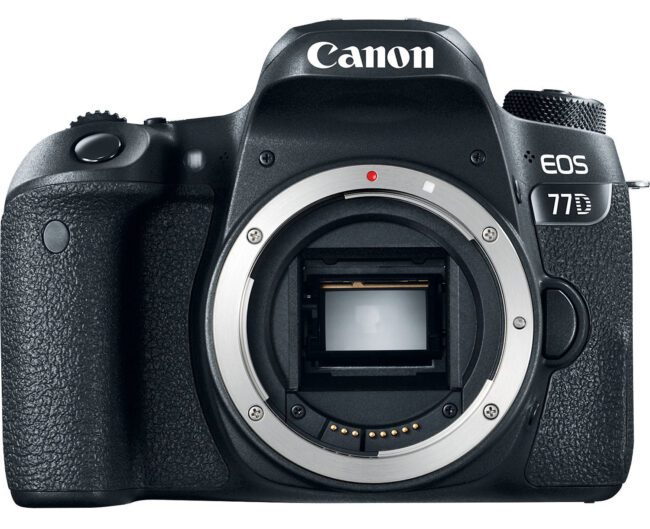
For the same reason that the Pentax KP is placed at number nine, the Canon 77D / EOS 9000D sits at number seven. It is an advanced camera with an impressive control layout, and it includes almost all of Canon's newest features as well. But it costs $850, the second most expensive on this list.
The 77D sports an excellent 45-point autofocus system in the viewfinder, and it has a tilt-flip touchscreen – whereas the Pentax KP has a tilt-only screen without touch sensitivity. Perhaps even more important is that the 77D includes Canon's famous "dual pixel autofocus" to focus quickly and accurately via the rear LCD screen (whereas most DSLRs mainly focus well through the viewfinder). It also has Canon's newest 24-megapixel sensor for excellent quality images.
Unfortunately, the $850 price is a steep asking point. You wouldn't lose much by going with a camera like the Canon T7i, Nikon D5600, or Pentax K-70 – and you could save hundreds of dollars along the way. If you need the build quality of the 77D, don't let me stop you, but at least consider the less expensive options before you make the leap.
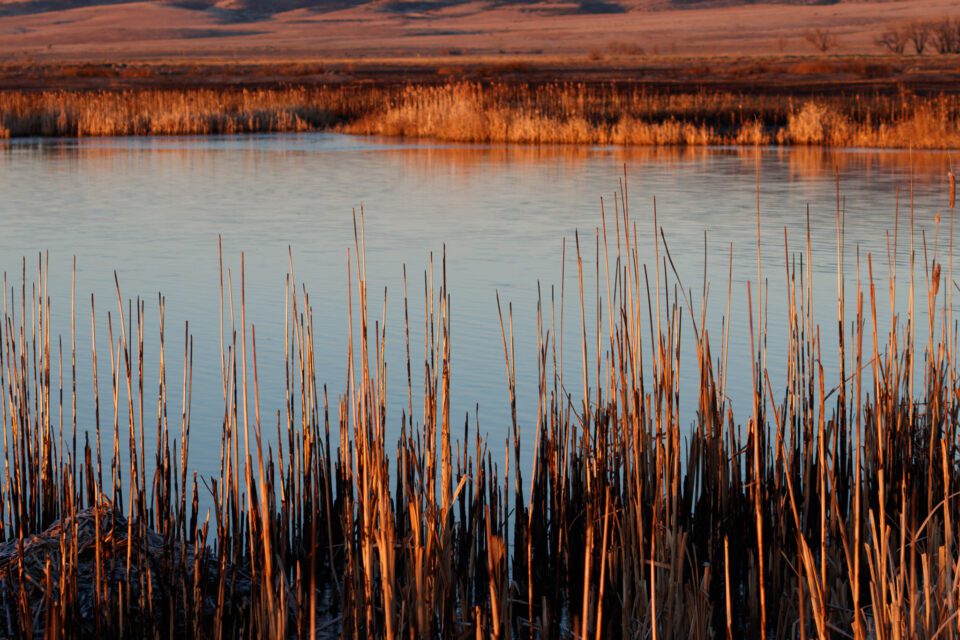
6. Canon Rebel T6i / 750D
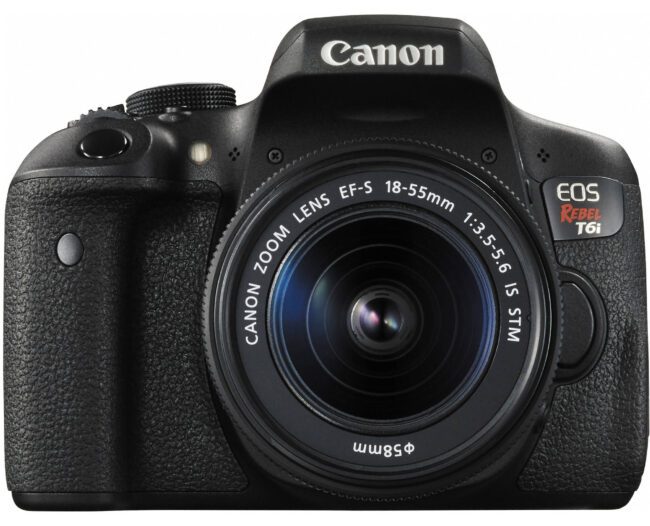
One solid value in Canon's lineup of entry-level DSLRs today is the Rebel T6i / EOS 750D, released in February 2015. Perhaps because of this camera's age, Canon has been putting some impressive discounts on the T6i, which now sells for just $560 with a kit lens (though you won't always be able to find it selling new with a lens, probably because Canon's inventory is being replaced with the newer T7i).
This camera ticks a lot of the right boxes: a 24-megapixel sensor (though the older one), 19 autofocus points, 5 FPS shooting, and a tilt-flip touchscreen. The T6i does not have dual pixel AF, however, which does harm its prospects for video. And keep in mind that the 24-megapixel sensor is Canon's older version, which doesn't perform quite as well as its competition in low light (including the Nikon and Pentax cameras on this list, plus the newer Canons).
One camera with noticeably better specifications is the Canon Rebel SL3 released in 2019 (ranked #1 below). That camera is $90 more. The SL3 is smaller and lighter, making it easier to carry along. It also has much better battery life and Canon's dual pixel AF, as well as better video features (4K and 1080p 60 fps video shooting vs just 1080p 30 fps) – not to mention the newer 24-megapixel sensor rather than the older version. The only real advantage of the T6i over the SL3 is that it has 19 autofocus points versus 9, which is not enough to steer most photographers to the T6i.
Compared to the Canon T7i, things are a bit closer, largely because of the T7i's higher price of $700. But you gain a 45-point autofocus system, one more FPS (6 vs 5), and the newer 24-megapixel sensor on the T7i, as well as minor improvements to battery life and weight. To me, that's worth the extra $140 – but you may disagree.
There is also a version of the T6i with a slightly more advanced layout called the Canon T6s. It has two dials and a top LCD but otherwise is identical to the T6i. However, it sells for $650 body only (so you'd need to buy the lens separately), which means it is overpriced by comparison. I don't think it's worth considering unless you find a deal that brings it within $50-75 of the T6i in price, including a lens.
5. Canon Rebel T7i / EOS 800D
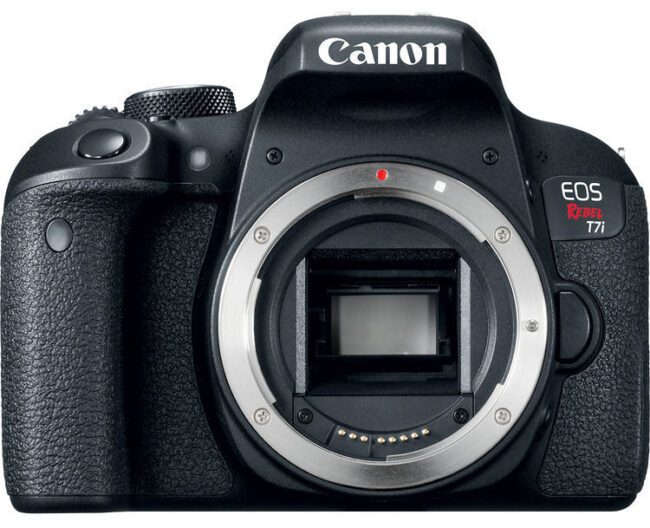
Every camera from here on out is what I'd consider a really good buy for the typical consumer. Even though the Canon Rebel T7i / EOS 80D ranks fifth, it's one of the most balanced cameras on the market and offers some pretty impressive features.
For example, the T7i matches the 77D in essentially every single specification, aside from the advanced control layout (no second dial), and yet it costs $150 less at $700 (though the price can fluctuate; you may want to check in case there's a sale).
At that price, you get all of Canon's bells and whistles, including the new 24-megapixel sensor, dual pixel AF, and 45 autofocus points. These specifications are versatile enough to be used for anything from landscape photography to sports and theater performances.
I would put the T7i higher on the list, but the $700 price range is popular for entry-level DSLRs, so there's a lot of competition here. For example, before you settle on this camera, take a look at the Canon Rebel SL3 ($50 less at $650, matching or exceeding many of the T7i's specifications). Or the $700 Nikon D5600, which is very similar to the T7i, but weighs less and has better battery life.
That said, if you find a good deal on the T7i or its specifications seem perfect for you, go for it. This camera is a pleasure to use – one of my favorites from testing – with a great LCD and an excellent kit lens. Not long ago, it sold for $850, and even then I could see a case for buying it.
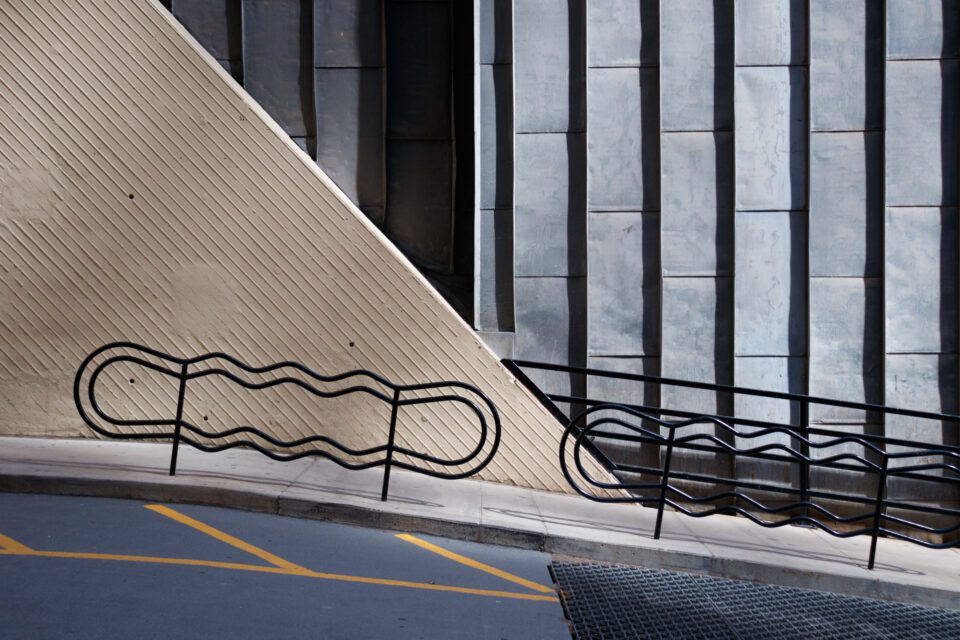
4. Nikon D5600
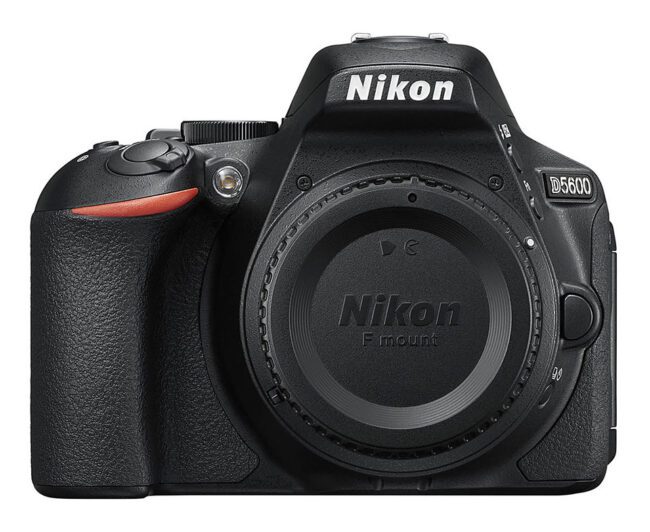
Next up is the Nikon D5600, which is perhaps the best entry-level DSLR available today. When I reviewed the D5600 last year, I wrote: "in many ways, it is the perfect option for people who just want an advanced camera that gets out of their way."
So, why didn't I rank it number one? For a long time, I did; you'll see plenty of references to that in the comments section below. But recently, Nikon decided to boost the D5600's price (with a kit lens) from a brilliant $550 to a less exciting $700. That's enough to shift this camera pretty far in the rankings.
That said, the D5600 is essentially the camera Canon copied with the T7i. (The Nikon came out first: November 2016 vs February 2017.) And between the two, it's slightly better overall.
Having tested both side-by-side, the D5600's autofocus system worked better, despite the similar number of autofocus points: 39 on the Nikon and 45 on the Canon. The Canon T7i shoots 6 FPS rather than the 5 FPS on this camera – but the D5600's better autofocus means it's still the slightly better camera for action photography. Beyond that, the two cameras are quite similar, but the D5600 weighs less (465 vs 532 grams) and has a better battery life (970 vs 600 photos).
So if you're looking for the best autofocus system on this list, arguably the best camera sensor, a great lineup of native lenses, a tilt-flip touchscreen, and a lightweight kit overall, the D5600 is an excellent choice. The only issue is the price; at $550, it was a no-brainer and clearly the #1 camera on this list. That said, I recommend checking the current price. If you find it even slightly on sale, it's probably my #1 recommendation. (I update this article pretty frequently to reflect changing prices, about once a month, but Nikon puts these cameras on sale all the time.)
If you want to save money, you can always buy an older model from the Nikon D5600 lineup, many of which are available used or refurbished for a great price. In fact, that's my top recommendation of all: Get an older D5000-series camera if you find a good deal, even if it's refurbished or used.
Here's a quick table showing the differences between the D5600 and the prior versions. Even back to the D5200, this is a great lineup of cameras, and all of them are worth considering today if you want to save some money. The differences between them are not very big, to be frank:
| Camera Feature | Nikon D5200 | Nikon D5300 | Nikon D5500 | Nikon D5600 |
|---|---|---|---|---|
| Announced | November 2012 | October 2013 | January 2015 | November 2016 |
| Sensor Resolution | 24 Megapixels | 24 Megapixels | 24 Megapixels | 24 Megapixels |
| AA Filter | Yes | No | No | No |
| Image Processor | EXPEED 3 | EXPEED 4 | EXPEED 4 | EXPEED 4 |
| Autofocus | 39-point Multi-CAM 4800DX | 39-point Multi-CAM 4800DX | 39-point Multi-CAM 4800DX | 39-point Multi-CAM 4800DX |
| Frame Rate | 5 FPS | 5 FPS | 5 FPS | 5 FPS |
| LCD Size | 3″ Diagonal | 3.2″ Diagonal | 3.2″ Diagonal | 3.2″ Diagonal |
| LCD Resolution | 921,000 dots | 1,036,800 dots | 1,036,800 dots | 1,036,800 dots |
| Built-in GPS | No | Yes | No | No, but can use your phone's GPS data via SnapBridge |
| Built-in WiFi | No | Yes | Yes | Yes |
| Built-in Bluetooth | No | No | No | Yes |
| SnapBridge | No | No | No | Yes |
| Max Video Frame Rate | 60i | 60p | 60p | 60p |
| Touchscreen | No | No | Yes | Yes |
| Battery Life | 500 | 600 | 820 | 970 |
| Weight (with battery and card) | 555 g (1.22 lbs) | 530 g (1.17 lbs) | 470 g (1.04 lbs) | 465 g (1.03 lbs) |
| Dimensions | 129 × 98 × 78mm | 125 × 98 × 76mm | 124 × 97 × 70mm | 124 × 97 × 70mm |
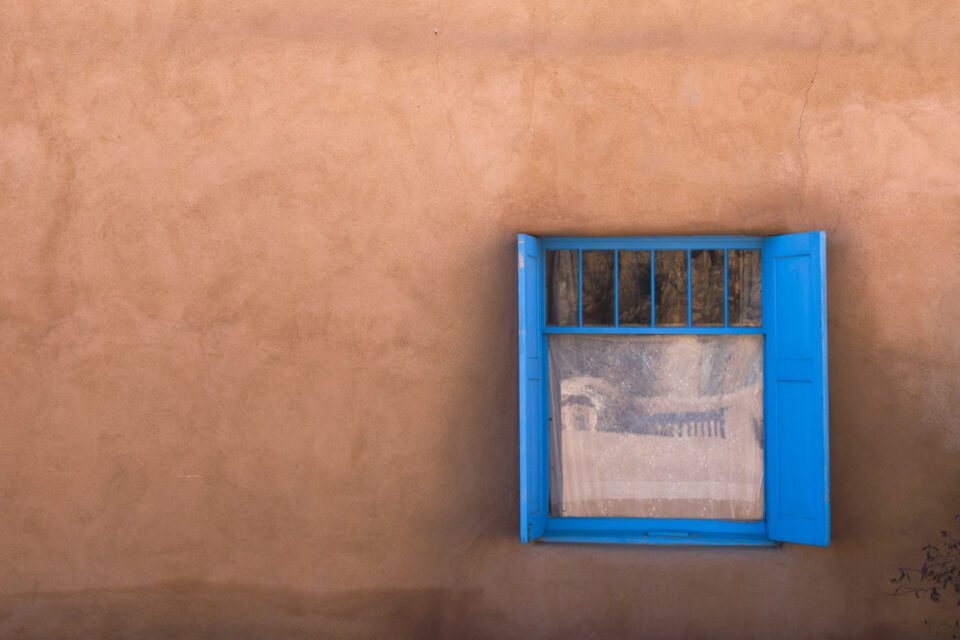

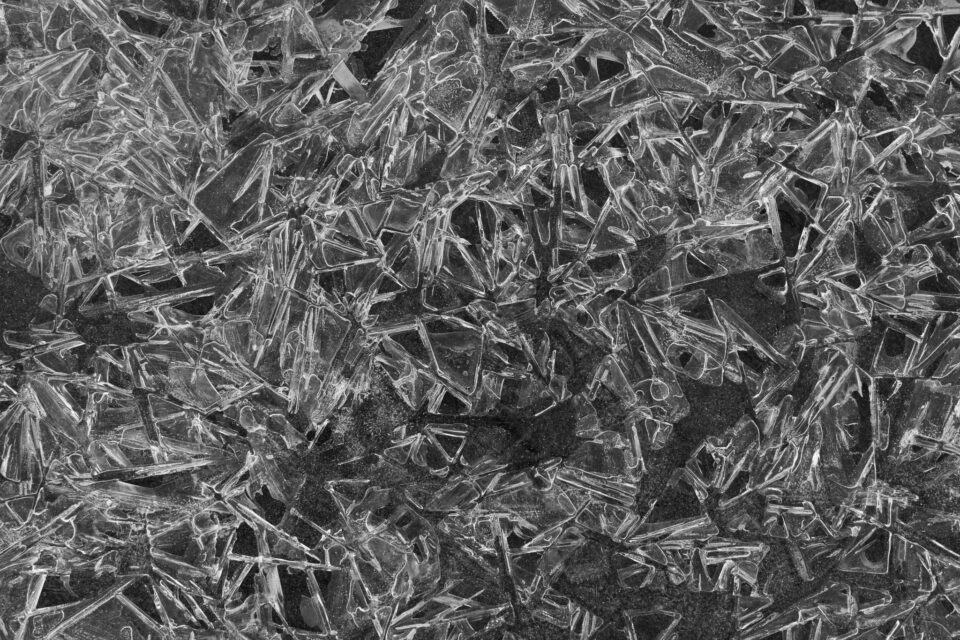
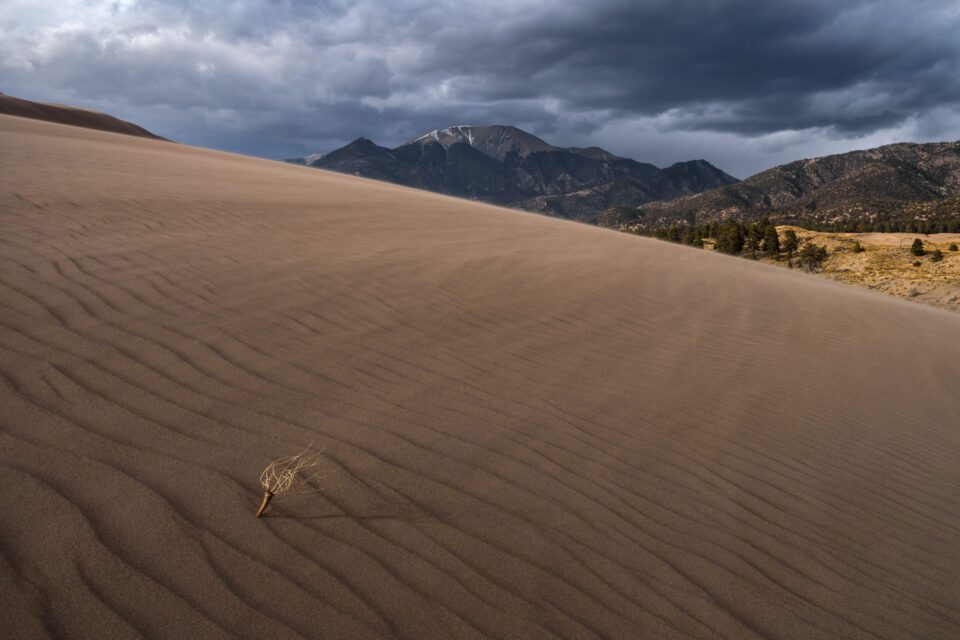
3. Pentax K-70
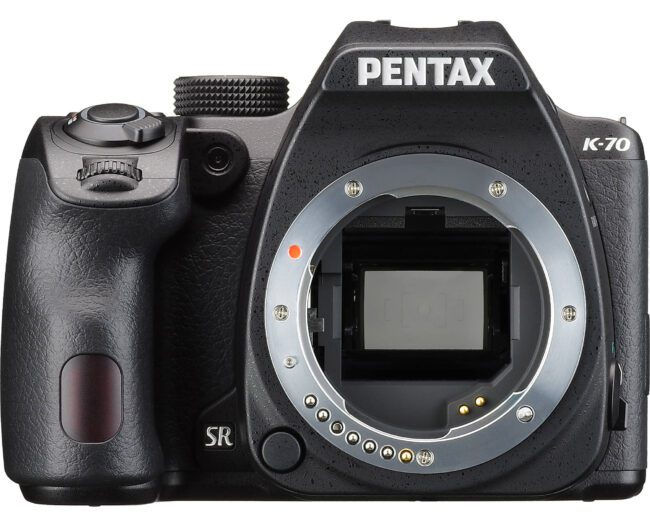
If you want a combination of top build quality, advanced controls, and a tilt-flip screen, look no further than the Pentax K-70.
This is an excellent and overlooked camera for beginners, and it's a good value at $700 (check current price). With a 24 megapixel sensor, 11 viewfinder autofocus points, and 6 FPS shooting, the K-70 is a highly capable camera with few downsides. It even has "hybrid AF" in live view, similar to Canon's dual pixel AF and great for video shooters.
Any issues with the K-70 depend upon your personal requirements, including how much you're willing to invest in a smaller DSLR company. Canon and Nikon are certainly more established names in the camera business, with a larger camera and lens lineup should you wish to upgrade in the future. At the same time, Pentax now has two full-frame cameras (the K-1 and K-1 Mark II) with larger sensors and the company's most advanced features, so you still have an upgrade path with this camera.
The nearest competitors to the K-70 are the Canon T7i and Nikon D5600. All of these cameras are priced at $700 and have very similar specifications. To me, though, the K-70's more rugged build quality and better handling – especially the second control dial – are more valuable than the lighter weight and better autofocus of the Nikon and Canon. But not all photographers will agree; in fact, I'm probably in the minority there.
The K-70 loses out in this list to the Nikon D3500 and Canon Rebel SL3, largely due to the price/performance ratio. The Nikon is a fantastic value at $450, while the Canon has similar specifications to the K-70 but costs $50 less and adds 4K video.
Still, for photographers who put a priority on build quality and an advanced control layout – say, landscape photographers who know they'll be shooting in bad weather – the Pentax very well could be the top camera for you. Although 11 autofocus points isn't much, everything else about the camera is hard to beat and worth the higher price.
2. Nikon D3500
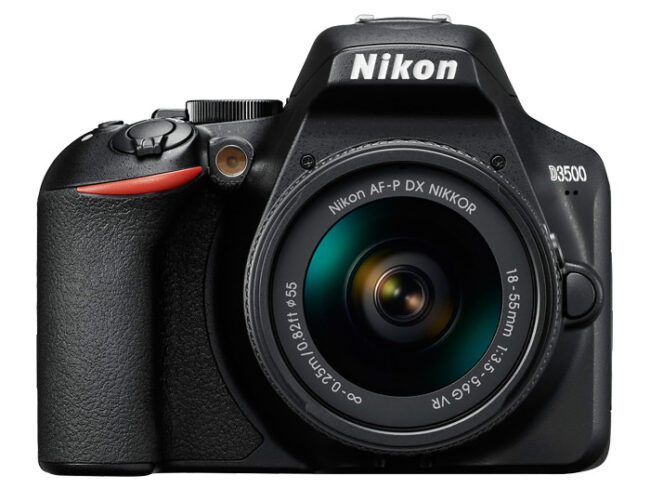
Nikon's D3000 lineup is arguably the best value for a DSLR today, and the D3500 is an excellent continuation of the previous versions (see our review). Because of its extremely good price, this is often the first DSLR I recommend to my friends who want a new camera.
The D3500 is a mere $450 with a kit lens, at least at the time of publishing this article. (Prices can fluctuate, and I saw it at $400 not long ago; check current D3500 price.) What's more, the D3500's 24-megapixel camera sensor is excellent – the same as on the D5600, which is perhaps the best APS-C sensor on the market today. If the image quality is all you care about, the D3500 is equal to or better than every other camera on this list – not a small feat considering its low price.
In that case, why isn't it ranked number one? A few things. First, although the D3500's image sensor is fantastic, cameras are about more than just a sensor. Other factors like ease of use, autofocus system, screen quality, and so on, also play a role. These are all areas where the D3500 sometimes falls behind the competition.
To start, the camera's LCD does not tilt or flip at all, and it's not a touchscreen. Video shooters especially will want to look at something like the Nikon D5600 or Canon SL3 instead, which fixes those problems.
The D3500's autofocus system also has pretty low specifications, although it surprised me in practice with how accurate it was. Still, the D3500 only has eleven autofocus points in the viewfinder – simply not enough to track a subject around the entire frame. If you're photographing something that moves fast, like sports or other performances, you might want a camera with a better autofocus system. Look at something like the D5600 or Canon T7i for good autofocus on a reasonable budget, or the Canon 77D or Pentax KP if your budget is a bit higher.
The Nikon D3000 lineup has been the company's least expensive DSLR line for years – the fewest features, but also the best prices. Unfortunately, Nikon's recent updates to this lineup didn't add much. Compared to the D3400, the D3500 has a slight increase in battery life, a deeper grip, and a one-ounce weight reduction (30 grams). That said, I've now used the D3500 for some extensive field tests, and it clearly is an improvement. The biggest point in its favor is the grip; the D3400 had a very uncomfortable grip that we complained about in our review, while the D3500 is very comfortable to hold.
Still, if budget is your main concern, I wouldn't necessarily get the newest version of this camera. The D3500 isn't all that different from the D3200 that launched way back in April 2012, let alone the D3300 and D3400. All of the older versions are discontinued, but you can still find them refurbished or used from plenty of sources, with excellent prices. Here's a table showing the progress of all of Nikon's D3000 series DSLRs since the Nikon D3100:
| Nikon D3100 | Nikon D3200 | Nikon D3300 | Nikon D3400 | Nikon D3500 | |
|---|---|---|---|---|---|
| Announced | August 2010 | April 2012 | January 2014 | August 2016 | August 2018 |
| Megapixels | 14.2 | 24 | 24 | 24 | 24 |
| Autofocus Points | 11 | 11 | 11 | 11 | 11 |
| Max Frame Rate (Stills) | 3 fps | 4 fps | 5 fps | 5 fps | 5 fps |
| Viewfinder Magnification | 0.8× | 0.8× | 0.85× | 0.85× | 0.85× |
| LCD Screen | 230,000 dots | 921,000 dots | 921,000 dots | 921,000 dots | 921,000 dots |
| ISO Sensitivity | 100-12,800 | 100-12,800 | 100-25,600 | 100-25,600 | 100-25,600 |
| Max Video Frame Rate at 1920 × 1080 | 24 fps | 30 fps | 60 fps | 60 fps | 60 fps |
| Bluetooth | No | No | No | Yes, which lets you use SnapBridge | Yes, which lets you use SnapBridge |
| Remote Shooting | With IR remote | With IR remote | With IR remote | With IR remote | With your phone via SnapBridge |
| GPS | Yes, with GP-1 or GP-1A | Yes, with GP-1 or GP-1A | Yes, with GP-1A | Yes, with SnapBridge | Yes, with SnapBridge |
| Battery Life | 550 shots | 540 shots | 700 shots | 1200 shots | 1550 shots |
| Weight (Body Only) | 16.0 oz / 455 g | 16.0 oz / 455 g | 14.5 oz / 410 g | 13.9 oz / 395 g | 12.9 oz / 365 g |
| Dimensions | 124.5 × 96.5 × 73.7 mm | 127 × 97 × 79 mm | 124.5 × 99.1 × 76.2 mm | 124 × 98 × 75.5 mm | 124 × 97 × 70 mm |
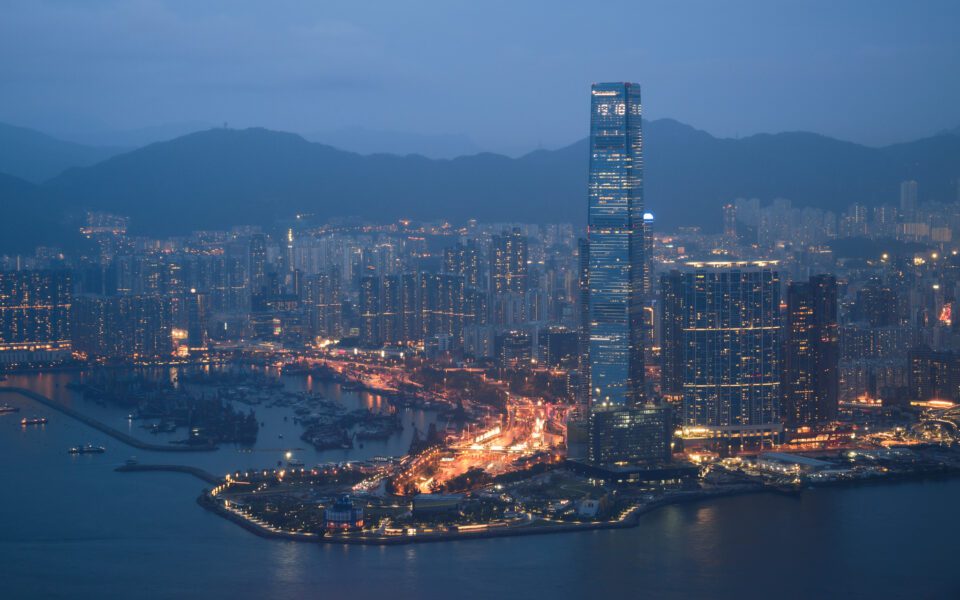
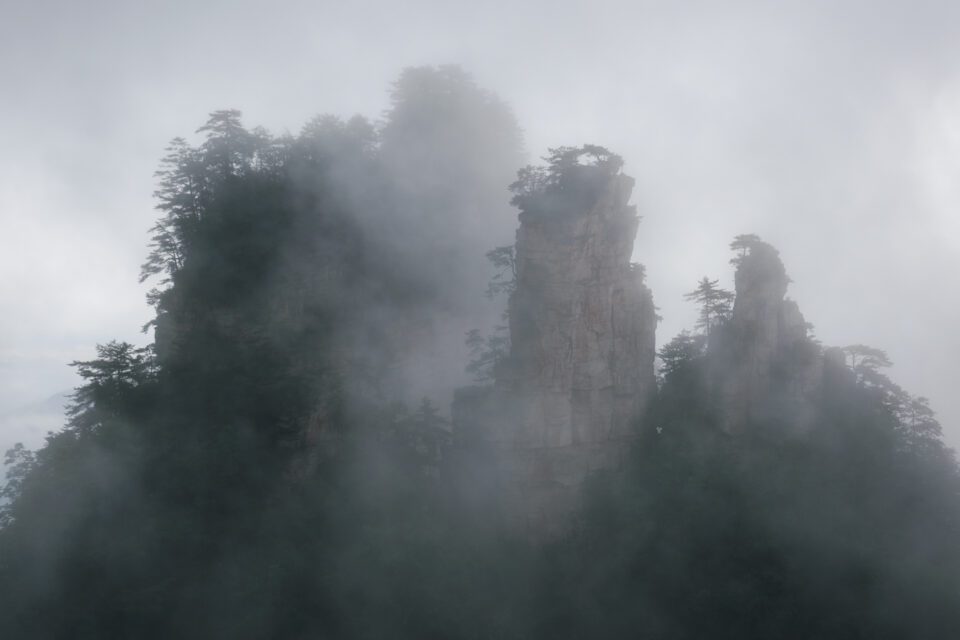
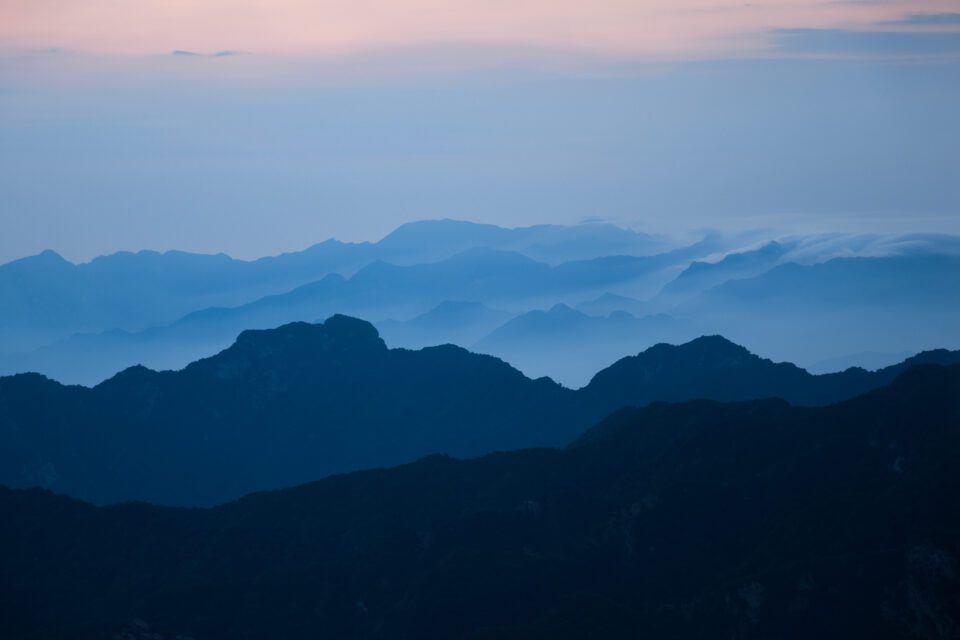
1. Canon Rebel SL3 / 250D
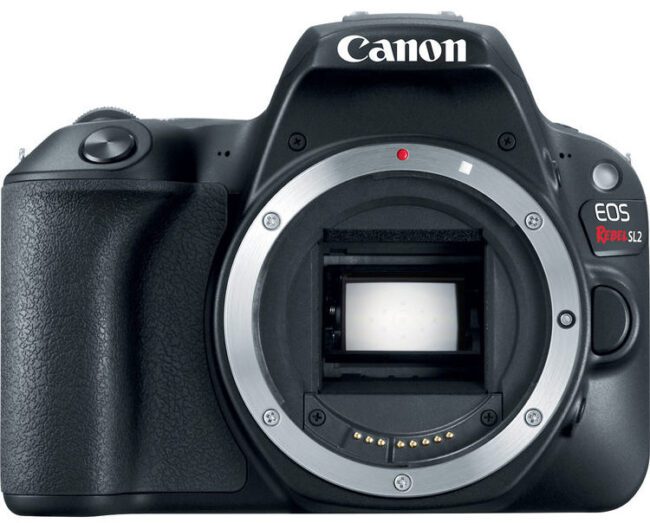
The top camera on this list is also the newest: the Canon SL3 / EOS 250D. It's a great camera, and tremendous fun to use.
The SL3 is tiny and lightweight, yet the grip is still comfortable, and it has some of Canon's most advanced features (including the newer 24-megapixel sensor). When I reviewed the nearly identical previous version (the Canon SL2) in New Mexico's Bisti Badlands and Chicago's glass-and-steel cityscape, I came away with the impression that this is a fantastic camera for any photographer – not just for a first-time DSLR shooter, even though that is the SL3's target audience.
Main features? The SL3 has an excellent touchscreen LCD, with a full range of tilting motion for easy composition (like the Nikon D5600). And the 24-megapixel sensor is Canon's newest, with excellent image quality, though it still lags slightly behind Nikon in low light (for the technically minded, no more than one stop of difference at high ISOs, based on our tests). Video users also will be happy to hear that the SL3 has dual pixel autofocus, the least expensive Canon camera to include it.
The big difference compared to the earlier SL2 is that the SL3 has 4K video – the only camera on this list to have it, although it only works with a heavy 2.64x crop relative to full-frame.
The Canon SL3 currently sells for $650 with a kit lens, which is a bit pricy, but you certainly get good features for the money. Compared to the Nikon D3500, for example, it adds a tilt-flip screen, 4K video, and dual pixel AF, making it much more useful for video. I also prefer the kit lens that comes with the SL3 in terms of ergonomics and size. The two cameras are otherwise pretty similar, so if you don't shoot much video, I'd save the $200 and get the excellent D3500 instead.
Alternatively, you can still buy the older SL2 used for less money. The SL2 also has a tilt-flip screen and dual pixel AF; it just doesn't have 4K video, and its battery life is a bit worse. Everything else is the same between the SL2 and SL3.
And that does it! However, before you focus too much on the specific rankings here, let me return for a moment to the #5 camera on this list, the Canon T7i. That camera loses to the SL3 in weight (532 vs 449 grams) price ($700 vs $650), battery life (600 vs 1070), and video (no 4K option), but beats it in autofocus performance (45 vs 9 autofocus points) and frame rate (6 FPS vs 5 FPS). If you're thinking that the T7i could easily be the preferred option for many photographers at that point, you're completely right. The difference from #5 to #1 on this list is pretty small. But in those small differences – the SL3 wins out.

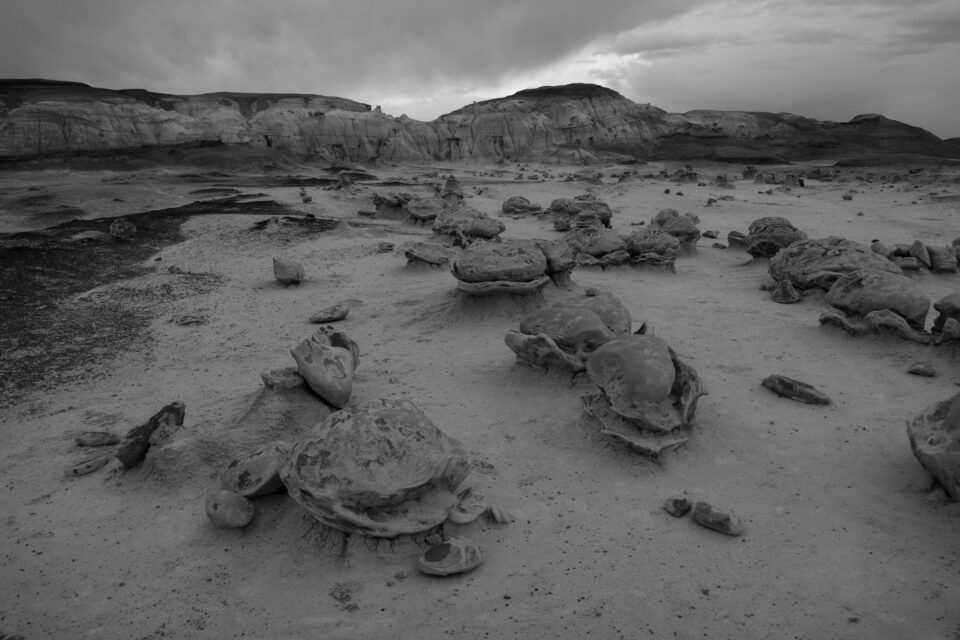
Complete Table
After seeing all the cameras in list form, I thought it would be useful to compare all these DSLRs and their key specifications in a table as well, hopefully to help you understand the specifications of each one a bit more clearly. For size purposes, I've divided it into two tables, first with cameras ranked tenth through sixth:
| Feature | Canon T6 / 1300D | Pentax KP | Canon T7 / 2000D / 1500D | Canon 77D / 9000D | Canon T6i / 750D |
|---|---|---|---|---|---|
| Ranking | 10th | 9th | 8th | 7th | 6th |
| Announced | March 2016 | January 2017 | March 2018 | February 2017 | February 2015 |
| Sensor Resolution | 18 Megapixels | 24 Megapixels | 24 Megapixels (older version) | 24 Megapixels (newer version) | 24 Megapixels (older version) |
| Autofocus Points | 9 | 27 | 9 | 45 | 19 |
| Frame Rate | 3 FPS | 7 FPS | 3 FPS | 6 FPS | 5 FPS |
| LCD Type | Fixed | Tilt | Fixed | Tilt-flip | Tilt-flip |
| Touchscreen | No | No | No | Yes | Yes |
| Max Video Specs | 1920 × 1080p, 30 fps | 1920 × 1080p, 60 fps | 1920 × 1080p, 30 fps | 1920 × 1080p, 30 fps (and 1920 × 1080i, 60 fps) | 1920 × 1080p, 30 fps |
| Battery Life | 500 photos | 390 photos | 500 photos | 600 photos | 440 photos |
| Control Layout | Basic | Advanced | Basic | Advanced | Basic |
| Weight (with battery and card) | 485 g | 703 g | 475 g | 540 g | 555 g |
| Dimensions (W×H×D) | 129.0 × 101.3 × 77.6mm | 131.5 × 101.0 × 76.0mm | 129.0 × 101.3 × 77.6mm | 131.0 × 99.9 × 76.2mm | 131.9 × 100.9 × 77.8mm |
| Price (early 2021, with 18-55mm kit lens) | $400 | $950 | $400 | $850 | $560 |
And then cameras ranked fifth through first:
| Feature | Canon T7i / 800D | Nikon D5600 | Pentax K-70 | Nikon D3400 | Canon SL3 / 250D |
|---|---|---|---|---|---|
| Ranking | 5th | 4th | 3rd | 2nd | 1st |
| Announced | February 2017 | November 2016 | June 2016 | August 2018 | April 2019 |
| Sensor Resolution | 24 Megapixels (newer version) | 24 Megapixels | 24 Megapixels | 24 Megapixels | 24 Megapixels (newer version) |
| Autofocus Points | 45 | 39 | 11 | 11 | 9 |
| Frame Rate | 6 FPS | 5 FPS | 6 FPS | 5 FPS | 5 FPS |
| LCD Type | Tilt-flip | Tilt-flip | Tilt-flip | Fixed | Tilt-flip |
| Touchscreen | Yes | Yes | No | No | Yes |
| Max Video Specs | 1920 × 1080p, 60 fps | 1920 × 1080p, 60 fps | 1920 × 1080p, 30 fps (and 1920 × 1080i, 60 fps) | 1920 × 1080p, 60 fps | 3840 × 2160, 24 fps; and 1920 × 1080p, 60 fps |
| Battery Life | 600 photos | 970 photos | 410 photos | 1550 photos | 1070 photos |
| Control Layout | Basic | Basic | Advanced | Basic | Basic |
| Weight (with battery and card) | 532 g | 465 g | 688 g | 415 g | 449 g |
| Dimensions (W×H×D) | 131.0 × 99.9 × 76.2mm | 124 × 97 × 70mm | 125.5 × 93 × 74mm | 124 × 97 × 70mm | 122 × 93 × 70 mm |
| Price (early 2021, with 18-55mm kit lens) | $700 | $700 | $700 | $450 | $650 |
Conclusion
Even though the Canon SL3 is number one on this list, remember that it isn't necessarily the best camera for your needs. If you'd rather pay $50 extra for better autofocus and forego 4K video, the D5600 might be your top choice. Or, if you want great advanced controls and top build quality, the Pentax K-70 could be the way to go. The same is true of the D3400 for its impressive value, or any camera you find on sale for a great price. The point is, you have plenty of options.
That said, I hope this article gave you a good idea of where to start when you're looking for an entry-level DSLR. There are so many cameras available today that things can get a bit overwhelming, but the list above encompasses nearly every current entry-level DSLR available today, as of early 2021, with the exception of some older Canon DSLRs still sold new. Keep in mind that the prices on these cameras fluctuate, sometimes quite a bit. If you get a good deal onany of the cameras in this article, it could be worth taking. Again, there's not a dud in the bunch – just some cameras priced higher or lower than they should be, based on their competitors.
These might be "entry-level" DSLRs, but they're all good enough to let you take high-quality photos. If you aren't getting the pictures you want, it's time to work on your technique instead!
Best Entry Level Camera For Video
Source: https://photographylife.com/best-entry-level-dslrs
Posted by: morrisondervants71.blogspot.com

0 Response to "Best Entry Level Camera For Video"
Post a Comment